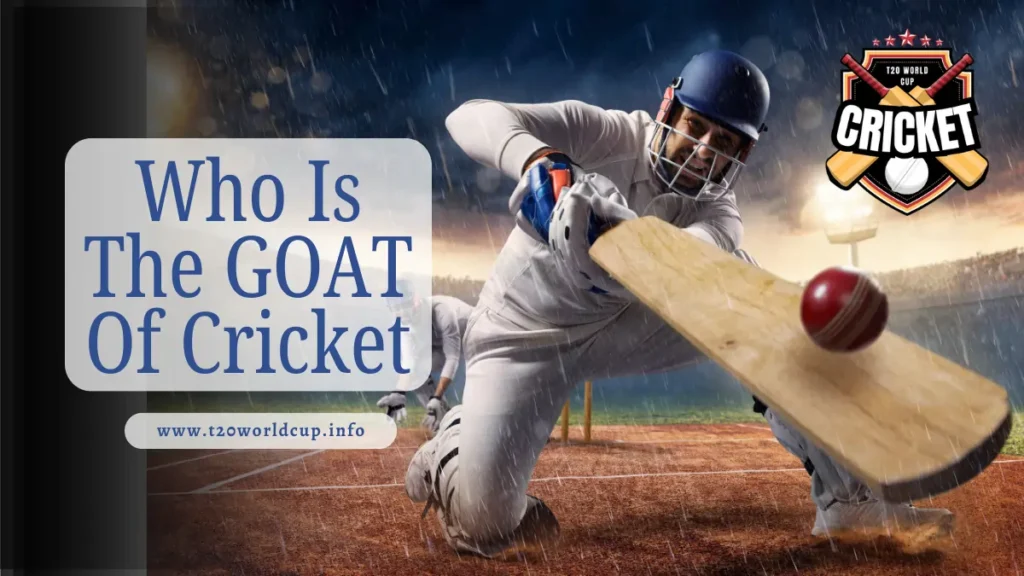Explore the intricacies of what is DLS method in cricket T20 with our comprehensive guide. Understand how this mathematical formula adjusts targets in rain-affected matches, ensuring fairness and competitiveness.
Cricket, often dubbed as a game of uncertainties, is not only a battle between bat and ball but also a constant tussle with unpredictable weather elements. In the fast-paced world of T20 cricket, where every run and every ball can significantly impact the outcome, rain interruptions pose a unique challenge. The DLS method comes into play to address this challenge and ensure fair results in rain-affected matches.
In this blog, we will delve into the intricacies of the DLS method in the context of T20 cricket, exploring how this mathematical model ensures a level playing field in rain-affected matches and how it has become an indispensable tool for cricket administrators, teams, and fans alike.
Let’s unravel the mystery behind the DLS method and understand how it adds excitement and strategy to the ever-dynamic world of T20 cricket.
A Guide On: What Is The DLS Method In Cricket?
The Duckworth-Lewis-Stern (DLS) method in cricket is a mathematical system employed to adjust targets in limited-overs matches, particularly when rain interrupts play. Developed by Frank Duckworth and Tony Lewis, the DLS method is now widely used in T20 cricket.
When rain disrupts a match, DLS recalculates the target for the team batting second, considering factors such as overs lost and the scoring patterns of the team batting first. This ensures a fair and adjusted target, reflecting the impact of weather on the original match conditions. Essentially, the DLS method acts as a crucial tool to maintain competitiveness and fairness in rain-affected T20 contests, providing teams with a recalibrated target for a balanced and equitable outcome.
Who Invented The Duckworth-Lewis Method?
The Duckworth-Lewis method, a mathematical system used to adjust targets affected by rain interruptions in cricket matches, was devised by English statisticians Frank Duckworth and Tony Lewis. Introduced in the early 1990s, this method was a pioneering solution to the challenges posed by weather disruptions in limited-overs formats. Initially known as the Duckworth-Lewis method, it was later refined and updated by Steven Stern, leading to the current designation as the Duckworth-Lewis-Stern (DLS) method.
The primary objective of this system is to recalculate targets for the team batting second based on various factors like overs lost and the scoring rate of the team batting first. Widely adopted in international and domestic cricket, the DLS method ensures fairness and competitiveness in matches affected by rain, providing a reliable framework to adjust targets in the ever-unpredictable realm of the sport.
Must Know – When Was It First Used?
The Duckworth-Lewis method was first used in a One Day International (ODI) cricket match on January 1, 1997. The debut occurred during the second ODI between Zimbabwe and England in Bulawayo. Its introduction marked a significant development in addressing rain-affected matches by providing a mathematical framework to recalculate targets.
Since then, the method has become a standard tool in limited-overs cricket, ensuring fairness in adjusting targets when weather disruptions impact the course of the game.
Step-By-Step How Is DLS Calculated?
The Duckworth-Lewis method (DLS) is a complex statistical algorithm used to determine a revised target score for a cricket team batting second in a match interrupted by rain or other factors. It takes into account the resources available to both teams, considering overs remaining and wickets in hand. Here’s a breakdown of the key steps involved:
1. Resources
- Overs: Each team starts with 50 overs (6 balls per over) as a resource.
- Wickets: Each team starts with 10 wickets as a resource.
2. Resource Percentage
- The DLS method combines these resources into a single “resource percentage” for each team.
- With all resources intact (50 overs, 10 wickets), both teams have 100% resources.
- As overs are used or wickets fall, the resource percentage decreases.
- A published table or computer program calculates the resource percentage for any combination of overs and wickets remaining.
3. Revised Target
- The revised target for the team batting second is based on the resources available to both teams.
- The formula can be simplified as
| Team 2’s target = Team 1’s score x (Team 2’s resources / Team 1’s resources) |
- Team 1’s score is the total runs scored by the team batting first before the interruption.
- Team 2’s resources and Team 1’s resources are their respective resource percentages.
4. Example
- Imagine Team 1 scores 180 runs in 35 overs (65% resources remaining) before the match is interrupted.
- Team 2 has 40 overs and 8 wickets remaining (72% resources remaining).
- Using the formula, Team 2’s revised target would be
| 180 runs x (72% / 65%) = 193 runs |
5. Additional Considerations
- The DLS method is a complex algorithm with further refinements to account for factors like powerplay overs and the scoring rate in the first innings.
- While generally considered fair, the DLS method can be debated in certain scenarios and is constantly being updated.
When To Use DLS Method In Cricket T20
The Duckworth-Lewis-Stern (DLS) method is crucial in T20 cricket for determining a fair outcome when a match is interrupted by external factors. Here’s a detailed breakdown of all the conditions where DLS comes into play.
1. Match Interrupted Before the First Innings is Completed
- Any Over: If rain, bad light, or other unforeseen circumstances force the interruption before the first team finishes their 20 overs, the DLS method kicks in.
- Minimum Overs Batted: The interruption must occur after at least one legal ball has been bowled in the first innings. Otherwise, the match is declared “No Result.”
2. Match Interrupted During the Second Innings
- Any Over: Like the first innings, an interruption can happen at any point in the second team’s batting.
- Minimum Overs Bowled: At least one legal ball must be bowled to the second team for DLS to be applicable. Otherwise, the match is declared “No Result.”
3. Match Abandoned Completely
- Match Unable to Resume: If the interruption renders it impossible to continue the match within the allocated time and weather conditions, DLS might be used depending on tournament regulations.
- Minimum Batting Time for Both Teams: Both teams must have faced at least some bowling to qualify for DLS calculation. Otherwise, the match is declared “No Result.”
Benefits And Drawbacks Of DLS Method In Cricket T20

Here, we discuss the benefits and drawbacks of DLS method in cricket t20
Benefits of the DLS Method in Cricket T20:
1. Fairness in Rain-Affected Matches
DLS ensures that rain interruptions do not unduly advantage or disadvantage any team. It provides a fair and calculated method to adjust targets based on the available resources.
2. Dynamic and Contextual Adjustments
The method considers both the number of overs bowled and wickets lost, making adjustments that reflect the specific match situation at the time of the interruption.
3. Enhanced Competitiveness
DLS allows for competitive outcomes even in rain-affected T20 matches
4. Adaptability Across Formats
Originally designed for longer formats, DLS has successfully adapted to T20 cricket, ensuring consistency in target adjustments across various formats.
Drawbacks of the DLS Method in Cricket T20:
1. Complexity
The DLS method involves a complex mathematical calculation, which can be challenging for players, fans, and even some cricket professionals to understand fully.
2. Subjectivity in Setting Targets
The method relies on subjective factors such as scoring rates, which may not always accurately reflect the true impact of weather interruptions on a match.
3. Penalty System Criticisms
Some critics argue that the penalty system in DLS, designed to account for teams falling behind the required rate, might be too harsh and not always reflective of a team’s actual performance.
4. Limited Data for T20-Specific Formulas
The DLS method was initially developed for longer formats, and its adaptation to T20 cricket might still be evolving. Some critics argue that T20 cricket may require a more tailored and format-specific approach.
Conclusion
In conclusion, the Duckworth-Lewis-Stern (DLS) method stands as a crucial tool in the realm of T20 cricket, offering a solution to the unpredictable interference of rain in matches. Developed by statisticians Frank Duckworth and Tony Lewis, with subsequent refinements by Steven Stern, this mathematical formula has evolved to ensure fairness and maintain the integrity of the game in the face of weather-induced disruptions.
In the ever-evolving landscape of T20 cricket, where every ball can shift the balance, the DLS method serves as a balancing act itself—providing fairness and competitiveness even when the weather decides to influence the outcome.
As the cricketing world advances, so too will the methods in place, ensuring that the essence of the game remains untarnished, regardless of the challenges posed by nature.
FAQs- What Is DLS Method In Cricket T20
Do wickets affect DLS?
The D/L method works because teams have two resources to make runs with the number of overs to be bowled and the number of wickets in hand.
How often is the DLS method updated or revised for T20 matches?
The DLS method undergoes periodic updates and refinements to enhance its accuracy and relevance. Cricket authorities may review and modify the method to address any shortcomings and ensure its effectiveness in the evolving landscape of the sport.
Who decides to use the DLS method in a T20 match?
Match officials, including the umpires, make the decision to use the DLS method based on the severity of the weather interruption and its impact on the match. It is a standard protocol to maintain fairness in rain-affected matches.



